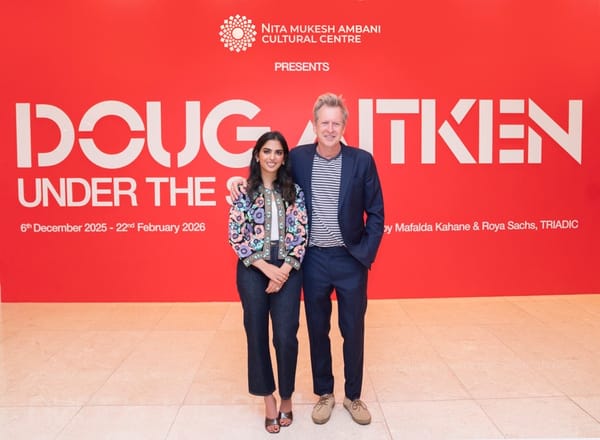Histories in the Making: Unveiling India Through the Lens of 19th-Century Photographers
Histories in the Making: Photographing Indian Monuments, 1855–1920 at DAG, New Delhi, reveals how early photography shaped the understanding of India’s history, challenging colonial narratives and spotlighting the artistic contributions of Indian photographers.

In an ambitious and profoundly evocative exhibition, DAG presents Histories in the Making: Photographing Indian Monuments, 1855—1920, a collection that explores the intricate relationship between photography, colonialism, and the shaping of India’s historical narrative. Curated by Dr. Sudeshna Guha, this landmark exhibition runs until October 12, 2024, at DAG, New Delhi, drawing from the gallery’s rich archives to offer a glimpse into the evolution of photography in India and its role in documenting the subcontinent’s architectural marvels.
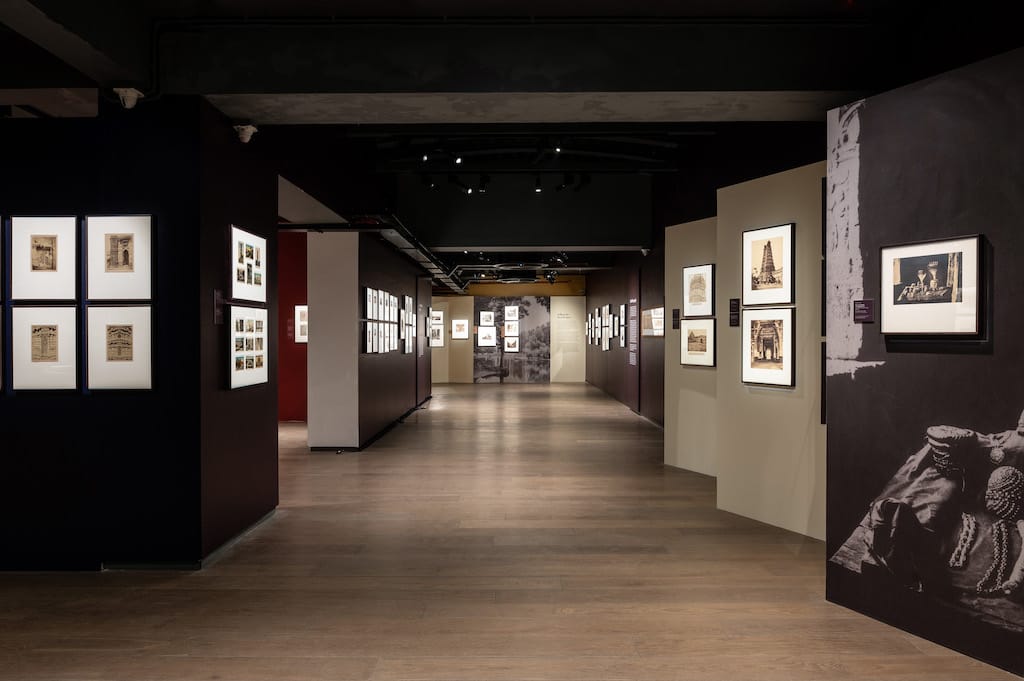
The Intersection of Photography and Colonialism
Photography in the mid-19th century was more than just a means of capturing images; it was a tool of imperial power, a method to assert control, and a way to communicate the grandeur of the British Empire back to audiences in Europe. As Ashish Anand, CEO and managing director of DAG, notes,
“The mid-19th century marked a time when photography was still in its infancy, and yet, British India emerged as the first country outside Europe to establish professional photographic studios. This era, marked by the rapid expansion of colonial infrastructure and scientific exploration, saw photography become an essential tool for documenting and understanding India’s rich cultural and architectural heritage. The photographs from this period, ranging from the 1850s to the early 20th century, are not merely records of historical monuments; they are artefacts that reveal much about the socio-political climate of the time.”
Indeed, Histories in the Making challenges the conventional understanding of early photographs as simple, objective records of the past. Instead, these images are presented as complex visual documents, shaped by the evolving technologies of photography, practices of collecting, and the broader circulation of visual material. The exhibition examines how these photographs were used to build the field sciences, create networks of information flow, and establish the academic disciplines of archaeology and history.
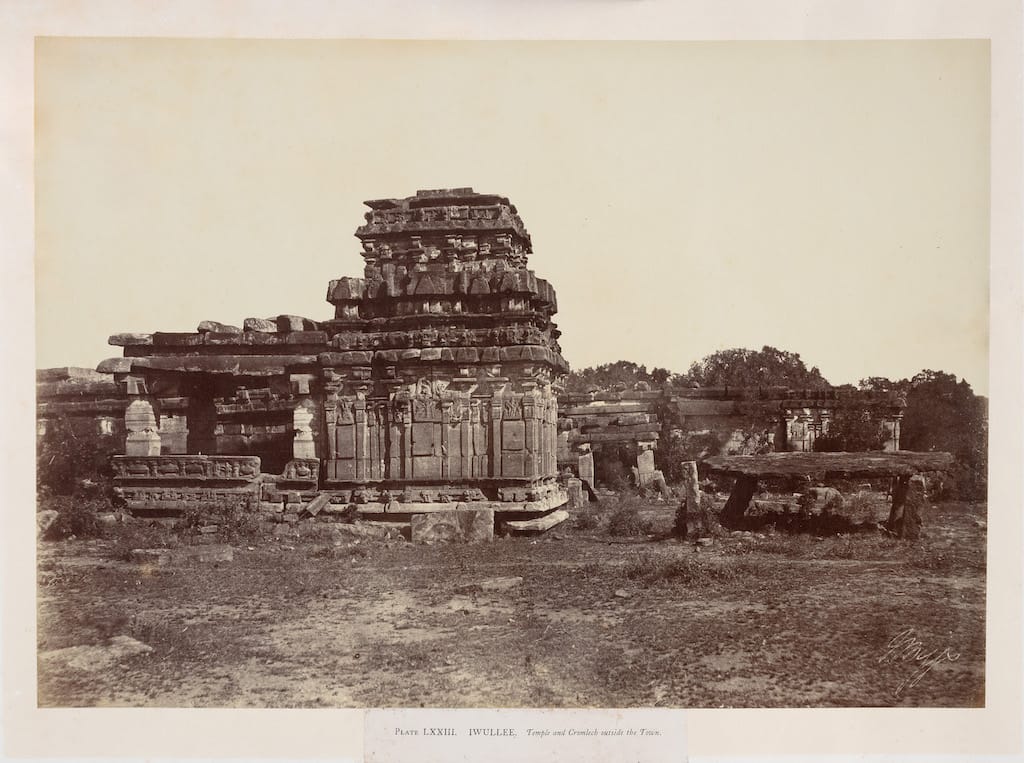
The Pioneers of Indian Photography
The exhibition begins with the architectural photographs of Thomas Biggs, William Pigou, and Andrew Neill, who were among the earliest photographers commissioned by the Bombay Presidency in the mid-1850s to document India’s architectural heritage. Their work was instrumental in preserving the monuments of India and set the stage for the systematic use of photography in historical surveys. Biggs, for instance, was tasked with creating ‘photographic facsimiles of the caves and temples of Western India,’ a project that was continued by Pigou and later Neill. These early works not only recorded the physical attributes of India’s architectural wonders but also reflected the colonial gaze that sought to assert control over the subcontinent’s cultural heritage.

Samuel Bourne, whose picturesque images of India, particularly those from his Himalayan expeditions, are considered some of the finest examples of 19th-century travel photography, is also featured in this section. Bourne’s photographs, known for their artistic composition and technical mastery, are presented alongside those of his contemporaries, offering a comparative view of how different photographers approached the documentation of India’s landscapes and architecture.
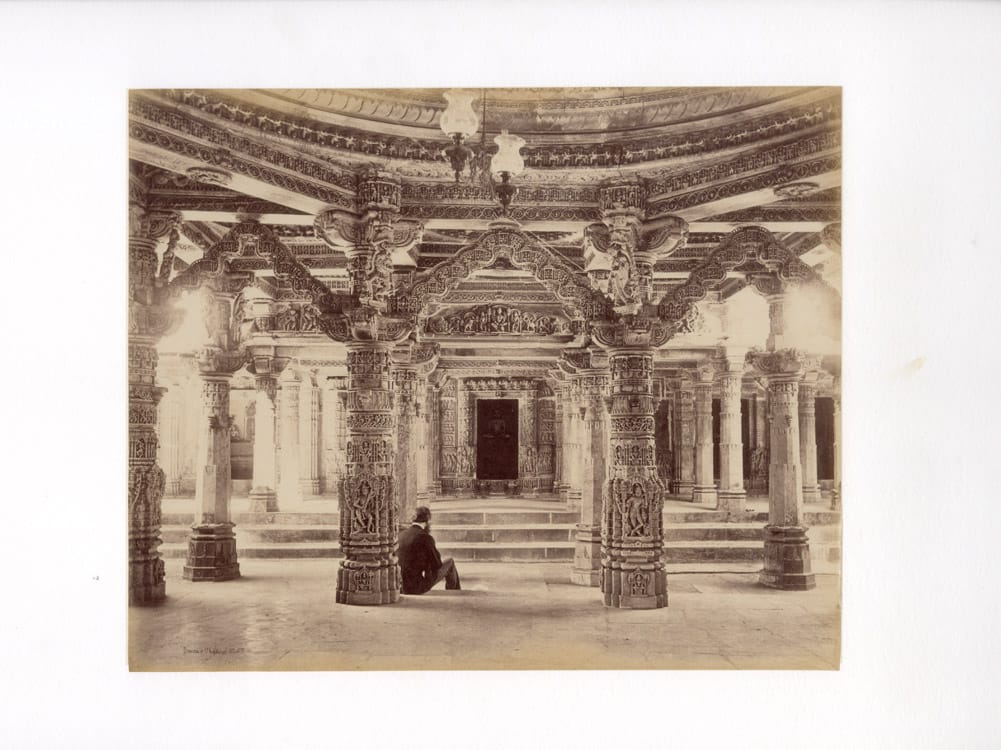
As photography became more established, figures like Felice Beato emerged as key players in the documentation of India’s turbulent history. Beato, known for his war and travel photography, arrived in India in 1858, shortly after the Uprising of 1857. His images, such as the desolate view of the China Bazaar in Lucknow, where General Neil was killed, illustrate his approach to capturing the immediacy of historical events. Beato’s work is characterized by his skill in creating photographic panoramas, which demanded meticulous attention to detail and technical precision. His panoramas of Lucknow and Delhi, composed of multiple overlapping photographs, are among the highlights of the exhibition.
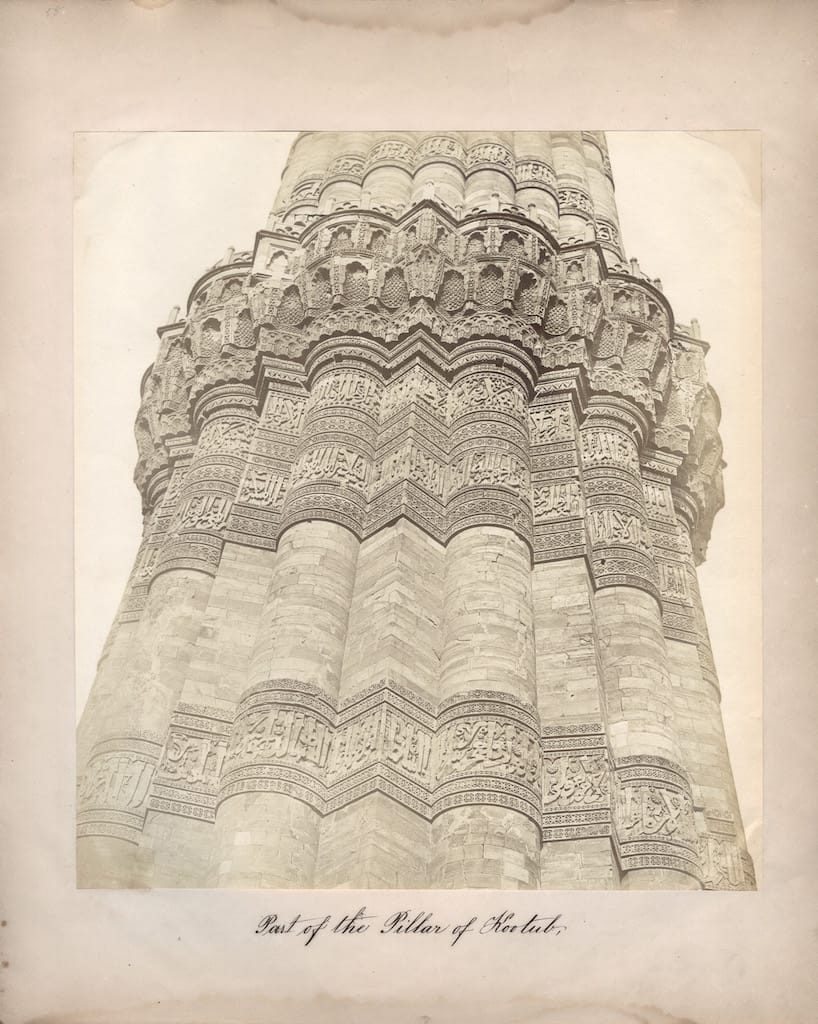
Linneaus Tripe, another prominent figure featured in Histories in the Making, began his photographic career in the late 1840s while serving in the Madras regiment of the East India Company’s army. Tripe’s work as the photographer of the Madras Presidency in the 1850s resulted in some of the most iconic images of South India’s architectural heritage. His photographs from the album Photographic Views in Madura are celebrated for their artistic and technical excellence. One such photograph from this series captures the ceremonial adornments of idols at the Great Pagoda in Madura, a rare close-up of still-life objects rather than architectural features, offering a glimpse into the religious practices of the time.
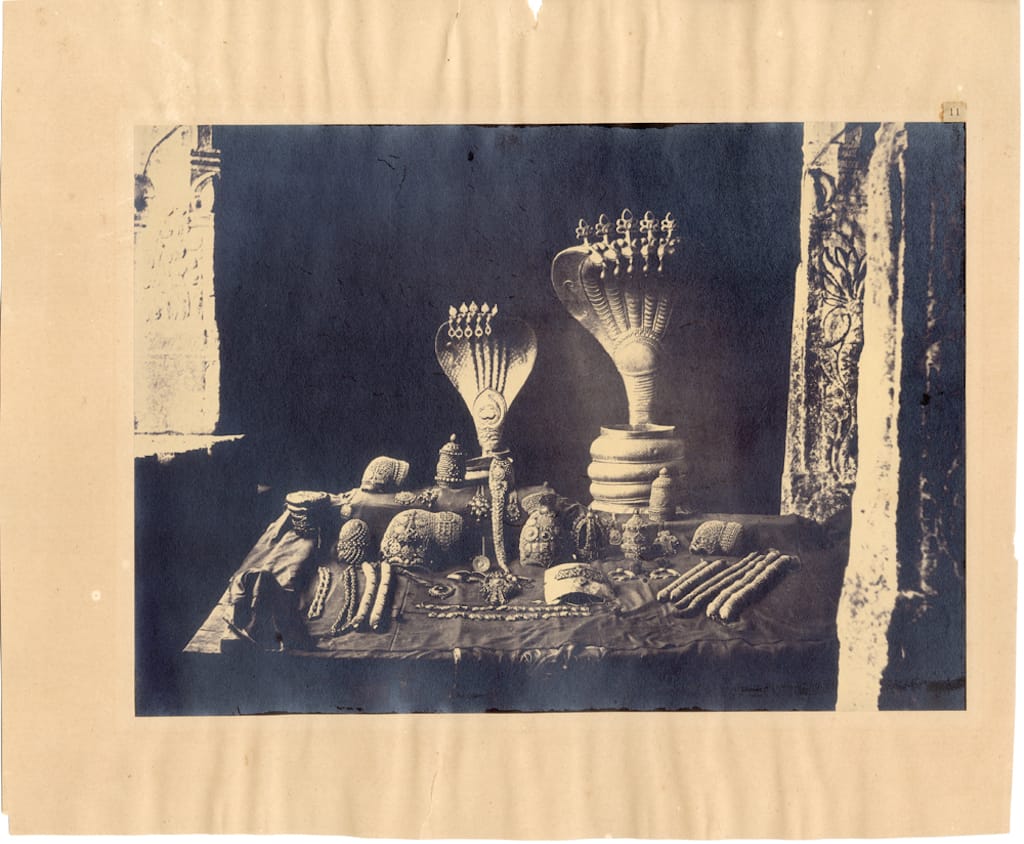
Indian Photographers in Focus
The exhibition also features Lala Deen Dayal, one of the most celebrated Indian photographers of the 19th century. Deen Dayal’s work was renowned not only in India but also internationally, earning him recognition and accolades in Europe and the United States. His photographs offer a more nuanced view of India’s cultural and architectural heritage. In contrast, Narayan Vinayak Virkar’s photographs of the Raigad fort provide a clearer example of a counter-narrative, with Virkar later becoming known as a ‘nationalist’ photographer.
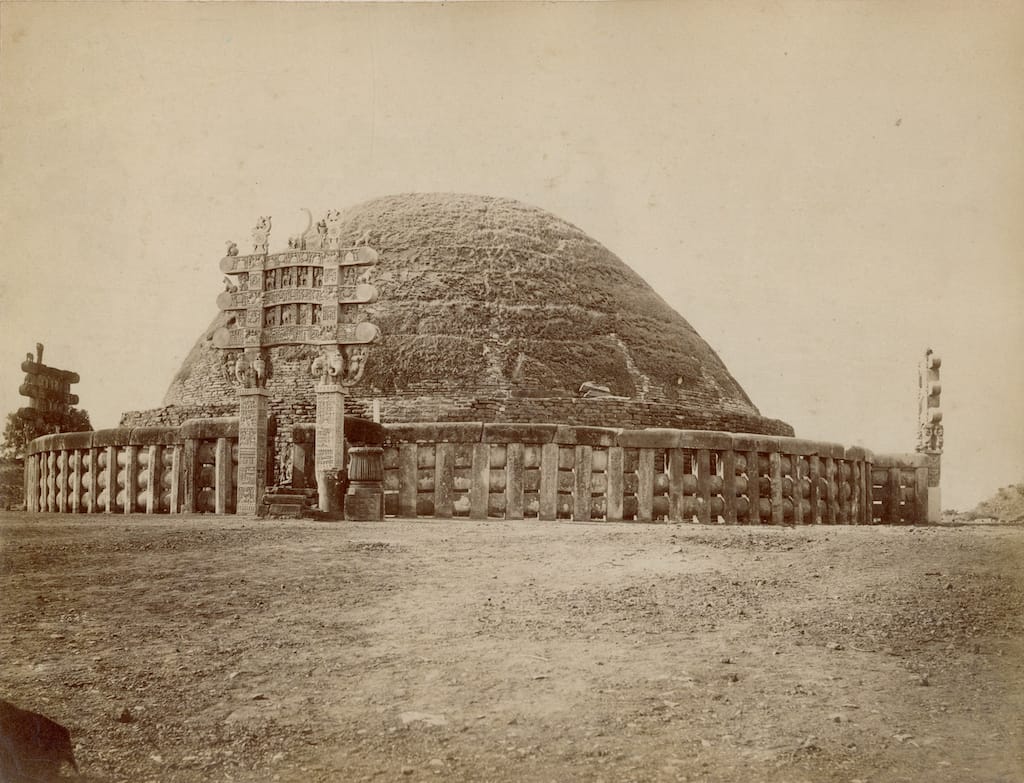
Photographs as Historical Objects
The exhibition also delves into the materiality of photographs, showcasing a variety of objects created through photographic technology, including paper and glass negatives, collotype, albumen, and silver gelatin prints, stereographs, postcards, cartes-de-visite, and cabinet cards. These objects are not just images; they are historical artefacts that tell a story about the technological and artistic advancements of the time.
For example, the albumen prints, which were widely used in the 19th century, are notable for their rich tonal range and fine detail. However, they were also highly susceptible to fading, making the preservation of these images a challenge. The exhibition addresses the conservation efforts required to maintain these fragile objects and highlights the importance of archival practices in preserving India’s photographic heritage.
The exhibition catalogue, featuring essays by Dr. Guha and Omar Khan, further explores the themes of the exhibition, providing scholarly insights into the history and significance of early Indian photography. The catalogue includes more than 150 objects, offering a comprehensive overview of the techniques and practices that shaped the photographic documentation of India’s monuments.

Revisiting Forgotten Histories
One of the most compelling aspects of Histories in the Making is its focus on monuments and photographers that have been all but forgotten over time. The exhibition brings to light the work of photographers who, while not as well-known as their British counterparts, played a crucial role in documenting India’s heritage. It also draws attention to monuments that, although significant in their time, have since faded from public memory.
For instance, the work of William Johnson and William Henderson, who photographed in the Bombay Presidency during the 1850s, is highlighted for its contribution to the early documentation of India’s architectural heritage. Their photographs, although less famous than those of Biggs or Beato, offer a unique perspective on the monuments of Western India and reflect the experimental nature of early photography.
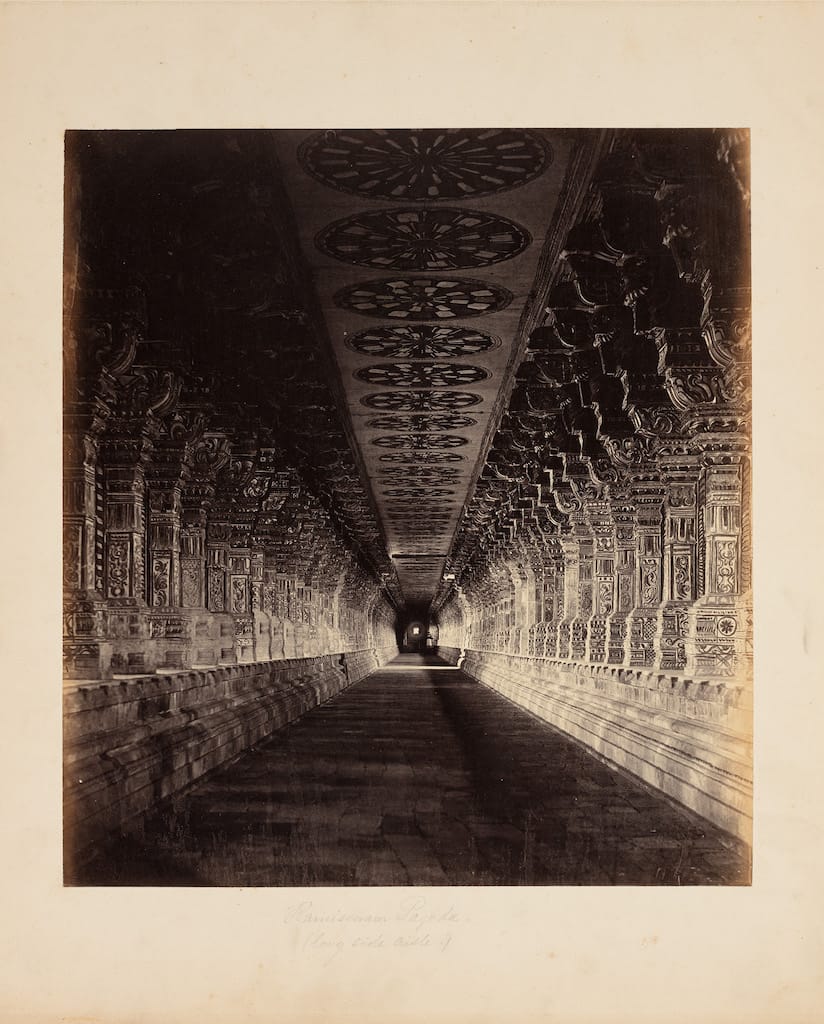
Reflection on Photography’s Legacy
Histories in the Making: Photographing Indian Monuments, 1855—1920 is more than just an exhibition of early photographs; it is a reflection on the power of photography to shape our understanding of history. Through its exploration of the interconnected histories of photography, colonialism, and the documentation of India’s cultural heritage, the exhibition offers a nuanced view of the past, challenging viewers to reconsider the role of photography in the colonial enterprise.
As visitors walk through the galleries of DAG, they are not merely viewing images of India’s monuments; they are engaging with a complex visual history that has been shaped by multiple forces—technological, artistic, political, and cultural. The exhibition invites us to look beyond the surface of these photographs and to consider the layers of meaning that have accumulated over time.
In doing so, Histories in the Making not only enriches our understanding of India’s past but also opens up new avenues of enquiry into the exciting world of early photography in India. As Dr. Guha aptly puts it, “The exhibition builds upon the connected history of photography and field surveys of India’s past to display the power and authority of the photograph and photographic collection as historical objects to think with.”




